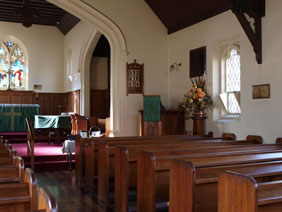Olympus E-520
-
-
Written by Gordon Laing
Olympus E-520 vs Canon EOS 450D / XSi vs Pentax K200D real-life noise
Olympus E-520 Noise Filter comparisonThe Olympus E-520 offers four different noise filter settings, Off, Low, Standard and High, so we shot the same scene with each setting to compare their differences. As seen with previous Olympus DSLRs, there’s quite a difference between the settings. With the Noise Filter switched off in the first column, there’s unsurprisingly the greatest noise visible, but equally little or no smearing of detail due to aggressive noise reduction. With the Noise Filter set to Low, there’s a reduction in visible noise, but equally an increase in softness. At the default Standard setting, noise has virtually been eliminated, but at the cost of greater smearing. Then with the Noise Filter set to High, there’s a noticeable compromise in detail, albeit without any of those pesky noise speckles. Like the other Olympus bodies before it, we’d say the milder Noise Filters are actually preferable to the Standard setting at high sensitivities. There’s certainly more fine detail visible even through the noise speckles, and remember you can always apply more sophisticated noise reduction to your exact tastes using software later. The important thing is there’s retrievable detail if you’re willing to turn down the Noise Filter. So if you’re willing to post-process or aren’t bothered by noise speckles, then you may wish to try switching the Noise Filter off altogether. But if you’d like a good compromise in-camera, then the Low setting will hang onto more detail than the default Standard setting. Now to see more real-life examples across its sensitivity range, check out our Olympus E-520 Gallery. |
Olympus E-520 Noise Filter: Off |
Olympus E-520 Noise Filter: Low |
Olympus E-520 Noise Filter: Standard |
Olympus E-520 Noise Filter: High | |||
 |
 |
 |
 | |||
100 ISO |
100 ISO |
100 ISO |
100 ISO | |||
 |
 |
 |
 | |||
200 ISO |
200 ISO |
200 ISO |
200 ISO | |||
 |
 |
 |
 | |||
400 ISO |
400 ISO |
400 ISO |
400 ISO | |||
 |
 |
 |
 | |||
800 ISO |
800 ISO |
800 ISO |
800 ISO | |||
 |
 |
 |
 | |||
1600 ISO |
1600 ISO |
1600 ISO |
1600 ISO |
Olympus E-520 results
 |
 |
To compare noise levels under real-life conditions we shot this scene with the Olympus E-520, Canon EOS 450D / XSi and Pentax K200D within a few moments of each other using each of their ISO settings in Aperture Priority modes. The lenses on each camera were adjusted to deliver the same vertical field of view – see note below.
The E-520 was fitted with the Zuiko Digital 14-42mm, the Canon with the EF-S 18-55mm IS and the Pentax with the DA 18-250mm; note this was the only lens Pentax had available for our review.
The image left was taken with the Olympus E-520 and 14-42mm lens at 21mm f8 and with a sensitivity of 100 ISO; the original JPEG measured 4.3MB. The crops are taken from an area to the right of centre and presented here at 100%.
Note: The Olympus E-520, like all Four Thirds DSLRs, captures images with a 4:3 aspect ratio that’s narrower than the 3:2 aspect ratio of most DSLRs including both the Canon and Pentax models here. In this test we adjusted each lens to deliver the same vertical field of view, so we’re not using the full width of the Canon and Pentax images. As such, the 450D / XSi and K200D are only using 10.8 and 8.9 of their total Megapixels here respectively.
At 100 and 200 ISO, the E-520 delivers a good degree of detail with no noise or processing artefacts to mention. At 400 ISO, the result remains pretty clean and detailed, although pixel-peepers may notice a fractional loss in ultimate resolution and subtle processing textures in the background – certainly nothing to worry about though.
At 800 ISO there’s a visible increase in processing artefacts and smearing of fine detail – it’s fine for smaller prints, but anyone examining on-screen at 100% will prefer to stick to lower sensitivities. A bigger drop occurs at 1600 ISO, where there’s no only an increase in noise and artefacts, but also a loss of saturation. This is best used for emergency situations only.
Canon’s 450D / XSi opts for a smoother approach by default which while avoiding noise, can result in softer-looking images (although note the 200 ISO sample is a fraction out of focus). In contrast the Pentax K200D, as also seen in our previous results pages, is applying greater contrast, saturation and sharpening by default, delivering much punchier-looking images. At first glance these appear preferable, but much of what you’re seeing is digital processing which can equally be applied to the other cameras if desired.
Interestingly the K200D, like the K20D, may boost these settings, but holds back on the noise reduction by default to retain detail albeit at the cost of greater visible noise. The E-520 and 450D / XSi are taking a different approach and applying greater noise reduction as standard, but Olympus does offer a number of noise filter settings which can tone down this strategy – we have examples using each of the settings at the bottom of the page. Alternatively if you’d like to skip straight to more real-life examples across its sensitivity range, check out our Olympus E-520 Gallery.
Olympus E-520 with Zuiko Digital 14-42mm |
Canon EOS 450D / XSi with Canon EF-S 18-55mm IS |
Pentax K200D with Pentax DA 18-250mm | ||
 |
 |
 | ||
100 ISO |
100 ISO |
100 ISO | ||
 |
 |
 | ||
200 ISO |
200 ISO |
200 ISO | ||
 |
 |
 | ||
400 ISO |
400 ISO |
400 ISO | ||
 |
 |
 | ||
800 ISO |
800 ISO |
800 ISO | ||
 |
 |
 | ||
1600 ISO |
1600 ISO |
1600 ISO |




